Report
Southeast Asia Symposium: On the Current Status and the Future of Southeast Asian Shorts
In Japan, Southeast Asia, and neighboring countries, filmmaking has become more accessible thanks to the advancements of filmmaking technology, including improved digital cameras and editing software. As a result, more and more films are being produced yearly. With four panelists from the Southeast Asian industry in attendance, we discussed how short films occupy the Southeast Asian cinema landscape. We took a look at common film production styles, and learned about the kinds of support systems in place for up-and-coming filmmakers.
Symposium Panelists:
Lamin Oo / Documentary Filmmaker, Producuer(Myanmar)
Phuong Hoang Nguyen / General Manager of the Center for Assistance and Development of Movie Talents(Vietnam)
Tan Chui Mui / Filmmaker, Co-founder of Da Huang Pictures, Founder of Next New Wave(Malaysia)
Salaithip Jarupoom / Film Lecturer at Chulalongkorn University(Thailand)
Part1
How are short films positioned and considered by the film industry in your country?
Part2 : What is the current situation of short film production in your country? & The example of co-production between Malaysia and Japan
Part3 : How are up-and-coming filmmakers being nurtured in your country? Are they studying at film universities and cinema schools?
Part4 : With questions (1) to (4) in mind—there are likely to be similar issues or conditions shared by Southeast Asian countries. How can Southeast Asian countries work together to support each other in the future?
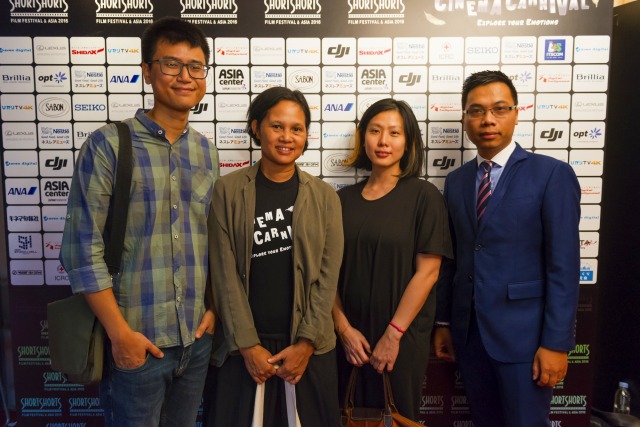
Ms. Salaithip Jarupoom (Thailand):
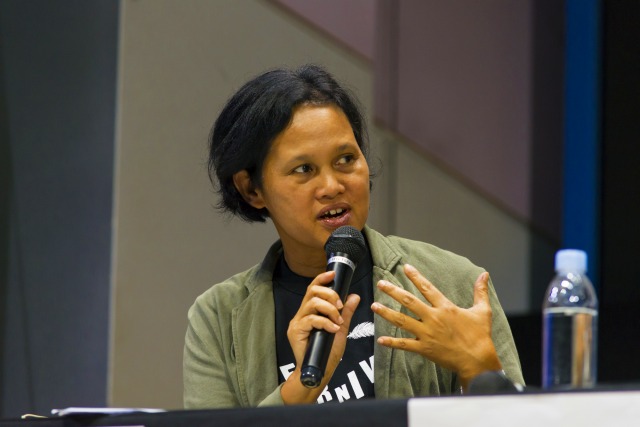
Nowadays, average of Thai feature films is about 60 films in each year. But compared with the 200 international imported films, it is like 25, 35%. When we consider the market size of Thai feature film, the market size is quite small when compared with the revenue of the international imported film. So this is, the index is very clear that the feature film market size is not a growth market, but quite a static market, too. The situation cause a big problem. First, there is no concrete policies or considers to support Thai film industry, was from a public sector. So Thai film industry is very high risk business. And the second is there are less than 5 major studios that can stand still and again secure revenue from the production. And the third is monopolized business control from film exhibition and distribution by two major companies. So again, more power to negotiate the amount of show times with film studio by giving priority to expected high revenue of the film and decreasing the number of the show times. So it is non-popular cinema, both major studio and independent studio confront difficult market opportunities. But when compared with the short film, you can see the light of hope. Ok, the short film in Thai is quite different. The number of short filmmakers arise yearly by 2 main groups. First, student short films which most of the products come from undergraduate in film university, the age is about 18-22 years old and as you know, as they are teenagers, most contents are concerned about adolescence issue, especially they’re expert of the relationship, their family, or their love or their friendship. And the second is, the group is adult short film. And some have proper film education or work in film, production films, or another came from non-film public training. This is, they are interested by film making. And as you know, the second group is more mature. So they can express or some point of views, social, political issue or personal attitude towards the current issue. This, that tends to be more varied than the first group. So it is clear that the position of more stylish shot film is to express the attitude or explore to the relationship, or the current issue, or the political from their creative or design. And I think this is similar to other countries in Southeast Asia, too. Maybe, I don’t know, but in Vietnam is that currently true or not?
Mr. Phuong Hoang Nguyen (Vietnam):
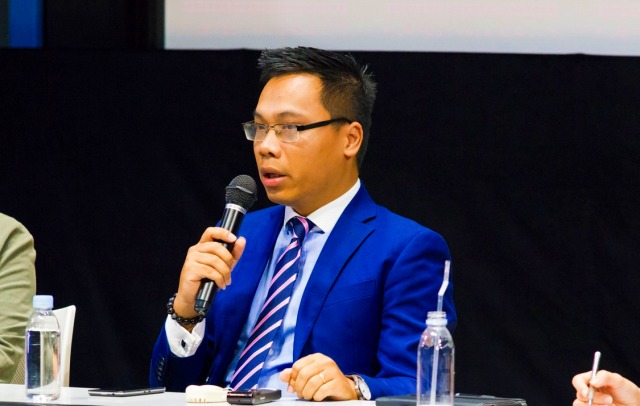
In Vietnam, the short film making is quite different. Before 2003, short film making was totally zero. The short films were just exist, existence for film students in the senior school. And we didn’t have national film festival, short film festival, but after 2003, there are two remarkable milestone that have changed short film making in Vietnam. Firstly, the development of internet in Vietnam and we’re putting cost, create several cinema forum on the internet, such as Yxineff, Moviesboom, and Movie Fan Club. These forum were home for the new generation of a film critic, film director, film producer and, of course, new generation of film audience. And the second milestone is the introduction of the TPD centre where it run a project name, “10 months- 10 short films,” in Vietnam, we produce 10 short films and although the “10 months- 10 short films” did not revolutionalize the whole Film industry in Vietnam, but it completed a mission that new revenue, new generation of filmmaker and now more than professional filmmaker in Vietnam.
Ms. Tan Chui Mui (Malaysia):
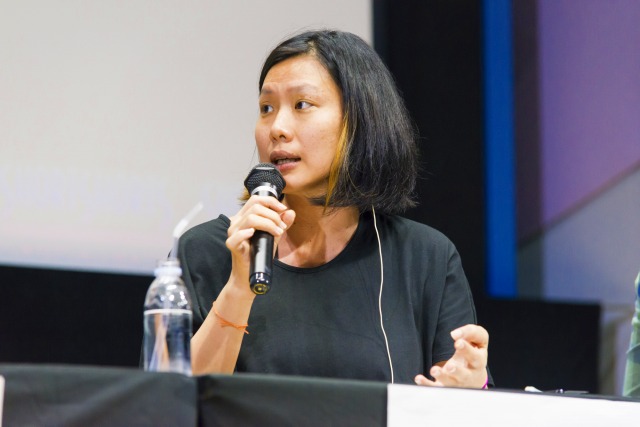
I think in Malaysia, maybe one of the very clear motion is that YouTube. Before YouTube, maybe there is TV and there’s film clubs that showing short films. And probably before year 2000, it’s very much what we see short films on TV could be advertisement, and could be government propaganda, or like educational video. And one of the maybe quite well known form of short film on TV of the advertisement is what we now call sort of like a genre of Yasmin Ahmad short film, which although Yasmin Ahmad, she’s passed away, now they are still advertisement that is actually quite close to that genre. So that is one of the form that what Malaysia is known. And then before year 2000, it’s mostly film student graduates from overseas, they’ll bring back their short films shot in overseas. Also some from the local university college, but we don’t really have many film schools or there wasn’t any film schools in Malaysia.
And then I think year 2000 is very important times when there’s DVDs and there’s like all these new technology, non linear editing, which changed the whole landscape, then you have like a group of filmmakers, they keep making short films. And I think by year 2003 or 2004, and you will see some short film production, they are not student and it’s not for the advertisement, and it’s not for any clear purpose except to show in the film club, and to show among friends, and it’s like film lovers, and people who want to make film. And I’m part of that movement as well, in a film club called needing shots. And it’s every three or four months, we’ll show some short films and filmmakers will start to make films, taking turns to direct, to DP, to edit, and all that. You see short films, maybe every three months, there will be 10 new short films to show. It was quite a fun period that we sort of shot short films for fun, not for money or anything. But it changed after a while, maybe after year 2007, 2008, it changed. Like when I look back now, young filmmakers, they mostly make short films for competition, this very important short film competition that now go for 10 years. It changed the short film landscape a lot. It’s called BMWshorties. And every year, they have a theme. And a lot of filmmakers, they will just make short films, they’re trying to study the last year’s winner or previous year’s winner, trying to make short films to beat the competition. So this is like new genre that we call BMWshorties. Short film is good or bad. It’s a casual way of making short films, the award money is huge, and also when you have the short film, you actually get like a big entry into the advertisement industry and a good career start for the young filmmakers. So that’s the current thing. Young filmmakers are very much into making certain type of short film for competition. Maybe some for film festival but this advertisement is even bigger than international film festival. That’s the current situation.
Mr. Lamin Oo (Myanmar):
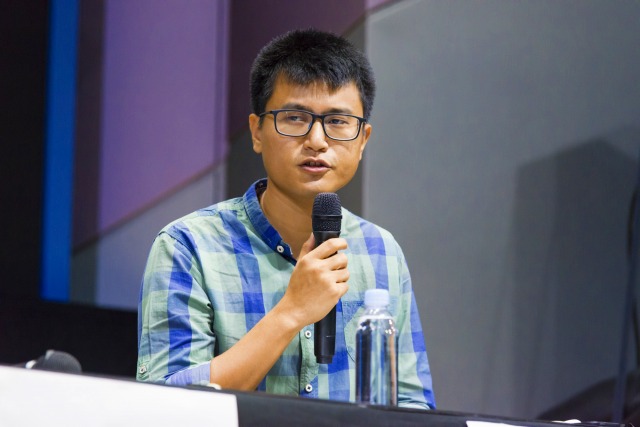
Hello. Konnichiwa. Thank you for having us, very excited to be here in Japan. Myanmar has a long history of cinema that went back to WWII and towards the end of the WWII, it was called the golden age of Myanmar films. We have cinema all over the country and our films were joint co-production with places like Hollywood, and like everything else in Myanmar, it is tied to the political situation of the country. So in 62, when the military government took over, the film industry also went down and it never came up. So in the context of the shorts, even in the days of Myanmar cinemas in 1950’s, we didn’t have short films. Short film, even though we have a long history of cinema, the history of short film in Myanmar for the life or better is short. So it’s in 2010 and 11 that the country is started to change and open up and the first kind of short film that was made tended towards documentary, because it is easier to shoot, it’s a low budget kind of project, but since 2011, there’s been steady rise and filmmakers who are making short films tend to be younger generation, younger people making the films. The subject tends to be dark for some reason. We have a very dark history so I think we are also going back to the military rule and bringing stories from there. So one of the films that will be showcased in this competition has one of those themes. One of the films we just saw this afternoon, “To School” has lack of proper education and poverty as a theme. So both documentaries and short films come from Myanmar tends to be very dark and sad. But that’s just the way it is. Of course, we don’t have a cinema that just show short films, we have some competitions, short films are directed towards those kind of competitions, whether locally or abroad. So at this point, for younger generations who are making short films, because they want to make films, and because they want to learn how to make films that they make short films. No one is getting rich by making short films.
Thank you very much. After listening to your story, we have the Short Shorts Film Festival. But so far, the short movies haven’t gained citizenship among the public. What I found in common with the panelists is, that there are film clubs in which movie lovers gather and create short films. People who like movies get together and make short films there. Thanks to the spread of digital equipment, the costs have been drastically reduced.
Young people can just grab the tools and easily shoot short films. They film about their daily life. Like Ms. Jarupoom said, they make films about friendship and family. In Myanmar, even young people film the dark stories of the military government. It’s a daily topic for them. She said that they use short films to express themselves. This is how short films became acknowledged by the general public. Ms. Tan has often referred to the advertisement. In Japan, our film festival created the Branded Short division. The corporation can create commercials of 10 or 15 seconds. They will not convey corporate message, “but tell an entertainment story in a short film of 10 or 15 minutes. The corporation will deliver the message of their brand. There is no commercialized concept but a story totally apart from the firm. Those creators, the young directors of the advertisement field can enjoy the opportunity to create short films. I believe in Malaysia where Ms. Mui is from, many young advertisement creators are working on short films. Thank you very much.
Southeast Asia Symposium: On the Current Status and the Future of Southeast Asian Shorts part2
In Japan, Southeast Asia, and neighboring countries, filmmaking has become more accessible thanks to the advancements of filmmaking technology, including improved digital cameras and editing software. As a result, more and more films are being produced yearly. With four panelists from the Southeast Asian industry in attendance, we discussed how short films occupy the Southeast Asian cinema landscape. We took a look at common film production styles, and learned about the kinds of support systems in place for up-and-coming filmmakers.
Symposium Panelists:
Lamin Oo / Documentary Filmmaker, Producuer(Myanmar)
Phuong Hoang Nguyen / General Manager of the Center for Assistance and Development of Movie Talents(Vietnam)
Tan Chui Mui / Filmmaker, Co-founder of Da Huang Pictures, Founder of Next New Wave(Malaysia)
Salaithip Jarupoom / Film Lecturer at Chulalongkorn University(Thailand)
Part2
What is the current situation of short film production in your country? & The example of co-production between Malaysia and Japan
Part1 : How are short films positioned and considered by the film industry in your country?
Part3 : How are up-and-coming filmmakers being nurtured in your country? Are they studying at film universities and cinema schools?
Part4 : With questions (1) to (4) in mind—there are likely to be similar issues or conditions shared by Southeast Asian countries. How can Southeast Asian countries work together to support each other in the future?
Ms. Salaithip Jarupoom (Thailand):
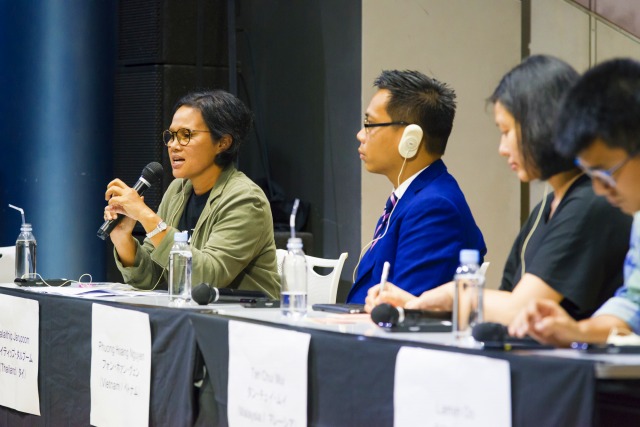
Ok. For making short films in Thailand, I should say that it’s totally, mostly supported by individual finance. No city support, no government support. But if you see the amount of film, short films in Thailand, its growth are really annually. Because of the, I think I must name this, Thai Film Foundation and Thai Film Archive, they organize annual Thai short films and real competitions continually for 20 years. Which made short film making in Thailand active. And I think it’s quite stronger now, and as you know, there’s totally individual finance, so the sponsorship doesn’t play before in short films so the contents still vary. And moreover, top priority of filmmaking is increasing every year, actually, as you know the development of digital technology and spread of film making to digital generation, especially in teenagers. Film students are also increasing yearly. Because when they finish their study, they must do some projects, some workshops, so we have approximately about 1,200 students that learn film in Thailand which are about 10 universities that teach film. So I think, as you know, as I tell you that the content of the Thai short films is about the relationships and some is about to explore the current issues. When we consider the value of the production, the student films is high quality of any production because the university always support them, with every equipment that they want to use. We have ALEXA, so they can use a big form of camera. So they can make a good quality. For non-, for adult short films, they must pay all this cost so the value of the production of the non-student films is lower than the student films. But the content of their short films is very interesting and more variety. So I think we have collaboration in maybe for organizing or exchange some course. This morning, I proposed Mr. Oo to be my guest, or to have a workshop with my student. Because my student is, they’re not keen on documentary they would like to tell their story with the classical storytelling, free kinds of storytelling. So I think it’s very interesting to invite or exchange some who are big name to teach them.
Mr. Phuong Hoang Nguyen (Vietnam):
I would like to exchange my story. Back to 2008 & 2009, we sit down and we talk about 10 months-10 short films as I mentioned before. Although those were very successful, that isn’t enough. So we have to change and we have to think new idea, we have to build non-professional film making in Vietnam. So now, what we do. First we run a new project named “We are filmmakers,” we talked to people from high school, student in university currently, to come and make short films for free for first three years. And now for the past seven years, we create not just non-professional filmmaker in Vietnam, we have more than 1,000 non-film professional, and we have produced more than 500 short documentary films and more than 100 short films. Some of them now, they are working in the film industry and Mr. Di Dang Phan, Ms. Diep Hoang Nguyen, Mr. Huu tuan Nguyen, inaudible, they are very famous in Vietnam now, and there’s the slow one in my centre that account myself. Our students are always keep the “We are filmmakers” spirit in your heart and mind.
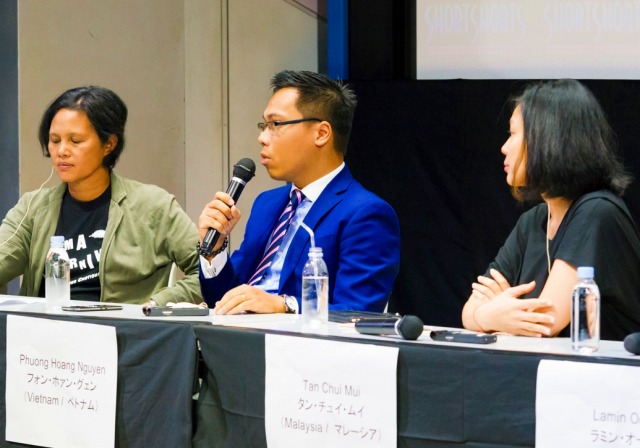
And we produce the short films in micro budget, maybe 20 or 50 dollar per films. It’s very cheap. Typically the centre is the only place in Vietnam, support for the filmmaker, equipment, finance, cost, community. And financially we don’t have any chance to work with another country like Thailand and Malaysia. So because in Vietnam, government are not so to provide us with any equipment, finance, even subsidy, so we do it ourselves. But we have got some fund from the US embassy and Denmark Embassy and Japan Foundation, too. So we keep fighting every day, keep moving for what, that’s our spirit, our spirit.
Ms. Tan Chui Mui (Malaysia):
Yeah, if talking about funding or budget of short films, I think it depends on the intention or production of the short films. Of course, for students, it’s very clearly coming from their parents, or their own money or support from school. Of course, with the filmmakers collective, or like special case like film centre is very much, own filmmakers, or more like film lovers collective which we also have when we support each other to make films, sometimes we give money to each other to make films. That is more rigorous for the film making. And then for advertisement, that is also very clear for them to use the medium of short film and especially after the YouTube, because of the internet, there is a lot more super micro film to be made and which is more soft advertisement.
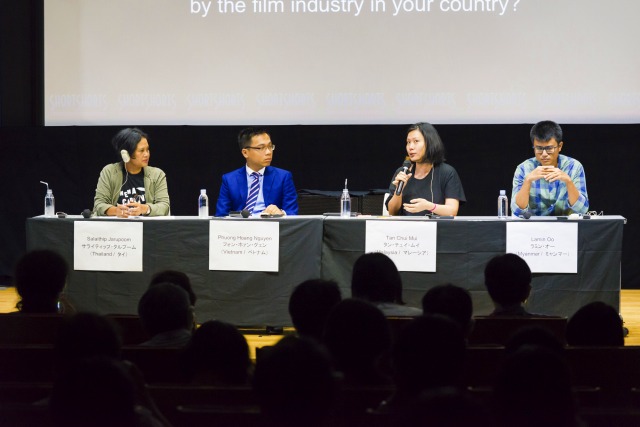 And then there’s also like short film funded by NGO, non-government organization for certain propaganda or message or education. There’s also like for the film centre, they fund filmmaker as a collective. And of course, there’s also YouTube channel where people view their own branding, or they make themselves, or they are celebrating their own channel of short film. And it’s really only the government, they become more active in something like short films in Malaysia, especially the 13 years of our director in general in Finas, which they give up short film grants which they always is but not even a lot more easier to get short film grants from the government. I’m not sure what’s the figure but I guess is, we just started like one year ago, I guess there will be more short films to create. But even then, before all this, government short films, like our short film competition like BMWshorties, they will get 100 entries, films like they were made for the competition, which I guess one of the reasons, because short film production can be very cheap, like it can be 100 dollars or up to 1,000 but there’s special short films, they are expensive. We have a very short list, some of the entries are maybe from advertisement agencies, they want to help their junior director to get a name and achieve pretty quite a lot of money. Again, when they win the award, they get grants to make a new short film with about 20 or 30 thousand dollars to make short films. And also they get broadcast like TV station like as shown in Malaysia, also sponsoring workshop and short film making and all that. So I would say it’s actually a lot more support now but for myself, I would say what was happening 10 years ago with the filmmakers collective or like what you are doing in film center, that’s a better model. Because this film are more like different purpose and intention. I do think I see less interesting or personal short films than before. I think film making is very aspiring cinema compared to just 10 years ago when they were just making short films for themselves. Yes, this happens but once in a while, you see some interesting short film. The Rozita that was shown, he was also the winner of BMWshorties, and he also get to make another film with the award money later. Most of the filmmakers are polished because the technology and they are generating very good, they look like they have very high production quality but for me, at the moment, less interesting, the short film producers.
And then there’s also like short film funded by NGO, non-government organization for certain propaganda or message or education. There’s also like for the film centre, they fund filmmaker as a collective. And of course, there’s also YouTube channel where people view their own branding, or they make themselves, or they are celebrating their own channel of short film. And it’s really only the government, they become more active in something like short films in Malaysia, especially the 13 years of our director in general in Finas, which they give up short film grants which they always is but not even a lot more easier to get short film grants from the government. I’m not sure what’s the figure but I guess is, we just started like one year ago, I guess there will be more short films to create. But even then, before all this, government short films, like our short film competition like BMWshorties, they will get 100 entries, films like they were made for the competition, which I guess one of the reasons, because short film production can be very cheap, like it can be 100 dollars or up to 1,000 but there’s special short films, they are expensive. We have a very short list, some of the entries are maybe from advertisement agencies, they want to help their junior director to get a name and achieve pretty quite a lot of money. Again, when they win the award, they get grants to make a new short film with about 20 or 30 thousand dollars to make short films. And also they get broadcast like TV station like as shown in Malaysia, also sponsoring workshop and short film making and all that. So I would say it’s actually a lot more support now but for myself, I would say what was happening 10 years ago with the filmmakers collective or like what you are doing in film center, that’s a better model. Because this film are more like different purpose and intention. I do think I see less interesting or personal short films than before. I think film making is very aspiring cinema compared to just 10 years ago when they were just making short films for themselves. Yes, this happens but once in a while, you see some interesting short film. The Rozita that was shown, he was also the winner of BMWshorties, and he also get to make another film with the award money later. Most of the filmmakers are polished because the technology and they are generating very good, they look like they have very high production quality but for me, at the moment, less interesting, the short film producers.
Mr. Lamin Oo (Myanmar):
So before we talk about how we produce short films, it’s related to why we produce short films in our country. So when the military government took over and the filming industry went down, the quality of the film goes down in Myanmar. What we see in the cinema, what’s featured in the cinema is very much like soap opera, over-acting, very non-sophisticated plots. So that is the reason why young people are making short films. One of my friends who is a filmmaker and told me why he make short films.
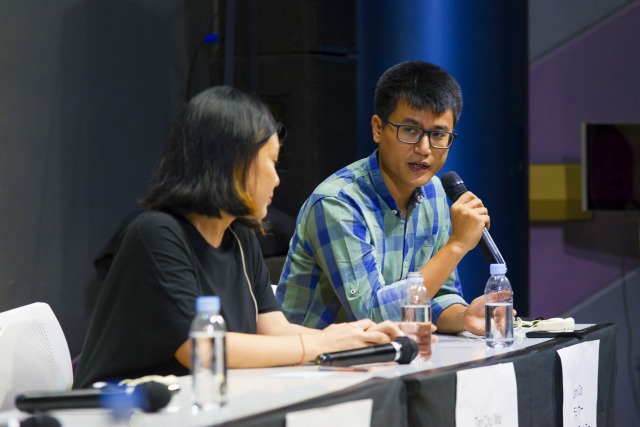 “I want to make a film that I want to watch.” So that is the motivation behind, why young people in Myanmar are making short films. The other point to consider is very similar to the situation in Vietnam where we have no support from the government. The government has never cared about film making, we’ve never had film school, for example. So film making has always been considered as an art that you learn through working with the director, by getting real experience in real production, not taught in school. So there are no programs to support short films like student programme as in Thai. So but you know, where we get interests from foreign embassies, like in Vietnam, British Embassy is very interested in supporting arts, American Embassy. So how do we make short films in Myanmar. One way is through short film workshops where students will go to workshops with story ideas, they’ll get training by either local or foreign instructors and then at the end of the project, you’ll make a film. That is how “Missing” and “To School” were made. And another way is very much, depending on your friends, asking, borrowing camera from that person, asking for some person who can come and work for free.
“I want to make a film that I want to watch.” So that is the motivation behind, why young people in Myanmar are making short films. The other point to consider is very similar to the situation in Vietnam where we have no support from the government. The government has never cared about film making, we’ve never had film school, for example. So film making has always been considered as an art that you learn through working with the director, by getting real experience in real production, not taught in school. So there are no programs to support short films like student programme as in Thai. So but you know, where we get interests from foreign embassies, like in Vietnam, British Embassy is very interested in supporting arts, American Embassy. So how do we make short films in Myanmar. One way is through short film workshops where students will go to workshops with story ideas, they’ll get training by either local or foreign instructors and then at the end of the project, you’ll make a film. That is how “Missing” and “To School” were made. And another way is very much, depending on your friends, asking, borrowing camera from that person, asking for some person who can come and work for free.
So since 2013, I started with my child friends a production house in Myanmar and our goal is to of course a) make a living but b) to shoot films that we want to shoot and then c) is to help other people who want make films with whatever we can. So this past year, we worked on two short films with directors, other directors, new director and we provide equipments, we provide services, our camera person will shoot it for free, our sound person will work for free, everybody worked for free. The director only need to pay for food during the production, or taxi, trying to chip in to make a good film. That’s one of the ways that we are making films. And the second film that we made this year, it’s a co-production with the director from Singapore. So he has a script, we offer our production, once we make the film in Myanmar, and we’ll collaborate, the same way we did with any other workshop, he will only have to give money for production cost, the rest of the professionals worked for free. And then at the end of the day, we have a short film to show for our effort. That is one of the, two of the ways of making films, so one is through workshop and another is through co-production plus working with productions who will help you make short film.
Seigo Tono (Festival Director, Short Shorts Film Festival & Asia):
Before we touch on the third topic, I would like to mention about examples of co-production in southeast Asia and Japan. Japan has been working close with the southeast Asian nations. As an example, we will show the joint short film between Japan and Malaysia. As I mentioned before, this film was produced with the financial support of FINAS of Malaysia. This film was directed by Woo Ming Jin, one of Malaysian promising director. Edmund Yeo was the producer of the Malaysian side. The film, The River of Exploding Durians which he directed was nominated for the Award for Best Director of the Tokyo International Film Festival in 2014. Both of them are leading the Malaysian film industry. I heard that Ms. Mui has also produced many films together with them. Now, we would like to screen the film, so please kindly step down. The title of the film is Okinawa. In “Asian Three-Fold Mirror” project, they supported Director Yukisada in Malaysia. They expanded every possible cooperation.
<Screening>
Ms. Takatsuka, could you tell us how you started to co-produce with them? Please tell us about the communication among the local staff members.
Ms. Rie Takatsuka, (ODD PICTURES, INC Producer):
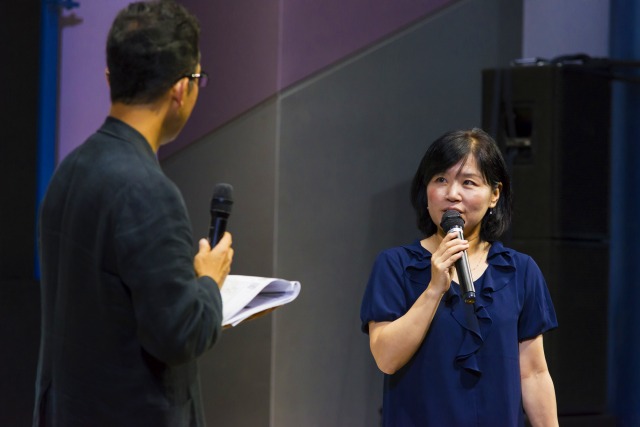
Hello everyone, I’m Takatsuka, the producer of ODD PICTURES. Thank you for watching OKINAWA, directed by Mr. Woo Ming Jin. The co-production of this film with Japan and Malaysia started like this. Director Woo and Edmund, both Malaysians had close relations with Japan. Edmund had studied in Professor Kohei Ando’s seminar in Waseda University. Mr. Woo’s wife is Japanese. He loves Japan and wanted to shoot an action film in Japan and Malaysia. He loves Japanese action films, especially Mr. Miike’s works. Though this film was different from their usual taste, they wanted to work on it. On the other hand, five years ago in Kuala Lumper, the ODD PICTURES filmed a short and full-length movie with all Malaysian staff. At that time, we were able to meet various Malaysian creators who are called as the Malaysian New Wave. With that connection, we became close with Malaysian filmmakers. We were grateful for the hospitality of the Malaysian people. When we heard that Mr. Woo and Edmund are filming in Japan, we definitely wanted to offer our support. We promised that we’ll help each other to create a film.
Tono:
Thank you, well this overlaps with the next question. When Edmund and Mr. Woo came to Japan from Malaysia,Ms. Takatsuka took care of their filming location. Could you tell us about the roles of Malaysian and Japanese staff in details, and also about the funding, like did you share the costs? Would you give us some more details?
Ms. Takatsuka:
I think this case was very rare. Edmund and Mr. Woo are notable directors in various international film festivals. With the support from National Film Development Corporation in Malaysia, they have already launched this film project. We assisted the filming in Japan. For this project, we did not provide any financial support. I was surprised to see the line producer shot to death in the film. We even used the Malaysian restaurant we knew for the filming location. We’ve also asked the Film Commission
Portal in Akiruno and many actors’ help, so we can save our budget. It was like service contribution.
Tono:
After you complete this film, are you going to show it in film festivals, or distribute it over the web? What kind of business plan do you have in mind?
Ms. Takatsuka:
First, this short film which are still editing will be completed soon. FINAS made a contribution to this project. It was because they wanted to use these short films as pilot projects so they can expand their business. We would like to have this project as groundwork for long-length films. We’re discussing whether to show this short film at film festivals or not. We hope this short film will lead us to the production of full-length film and to film festivals and funding.
Tono:
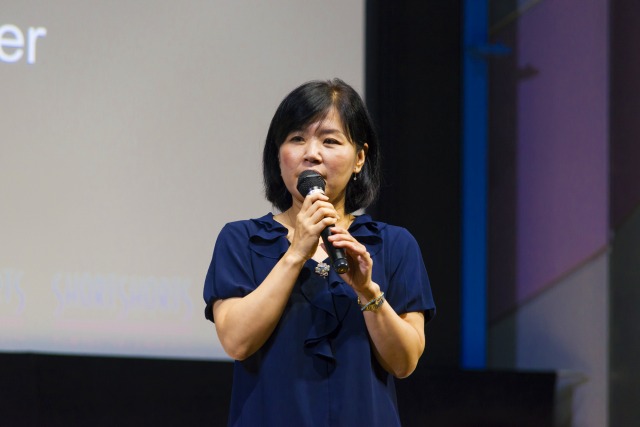
I see, it was sort of a pilot project for a long-length film production.
Ms. Takatsuka:
Yes, it was, so considering such aspects, we hope we can achieve those goals after completion. Finally, as one of the topics of today’s symposium, we would like to touch on co-production.
Tono:
What do you have in view about its development in Japan, especially southeast Asia?
Ms. Takatsuka:
Upon co-production, I would like to merge the creators’ senses among different cultures and nations. I would surely want to achieve this. For instance, when you film abroad but apply the same production at home, it’s not an exciting project. Using directors and DOPs, or scriptwriter and director from different cultures. I would personally like these challenges. I believe that for production, rather than pushing each other’s style, it’s better to work hard together and absorb each other’s advantages. Malaysians are especially good in cross-cultural communication. It is very natural to hear different languages spoken in Malaysia. In such sense, I would like to keep sharing each other’s culture with them.
Tono:
Do you wish to co-produce films with other southeast Asian nations besides Malaysia?”
Ms. Takatsuka:
Yes, I would love to. Having the experience in Malaysia as a groundwork, I personally would like to work with a Thai team. There is one ongoing project at the time. I would like to have young Japanese directors and filmmakers join and cooperate with us and achieve our goals.
Tono:
I see, thank you for sharing your story. Thank you very much.
As introduced, Ms. Takatsuka publishes a free advertisement newspaper, WAU. The paper covers Malaysian culture and films. The paper is available at this film festival, around the door over there. The name of the paper is WAU and in its recent issue, there is an article of Ms. Tan Chui Mui. Please take a look at it later.
Southeast Asia Symposium: On the Current Status and the Future of Southeast Asian Shortspart3
In Japan, Southeast Asia, and neighboring countries, filmmaking has become more accessible thanks to the advancements of filmmaking technology, including improved digital cameras and editing software. As a result, more and more films are being produced yearly. With four panelists from the Southeast Asian industry in attendance, we discussed how short films occupy the Southeast Asian cinema landscape. We took a look at common film production styles, and learned about the kinds of support systems in place for up-and-coming filmmakers.
Symposium Panelists:
Lamin Oo / Documentary Filmmaker, Producuer(Myanmar)
Phuong Hoang Nguyen / General Manager of the Center for Assistance and Development of Movie Talents(Vietnam)
Tan Chui Mui / Filmmaker, Co-founder of Da Huang Pictures, Founder of Next New Wave(Malaysia)
Salaithip Jarupoom / Film Lecturer at Chulalongkorn University(Thailand)
Part3
How are up-and-coming filmmakers being nurtured in your country? Are they studying at film universities and cinema schools?
Part1 : How are short films positioned and considered by the film industry in your country?
Part2 : What is the current situation of short film production in your country? & The example of co-production between Malaysia and Japan
Part4 : With questions (1) to (4) in mind—there are likely to be similar issues or conditions shared by Southeast Asian countries. How can Southeast Asian countries work together to support each other in the future?
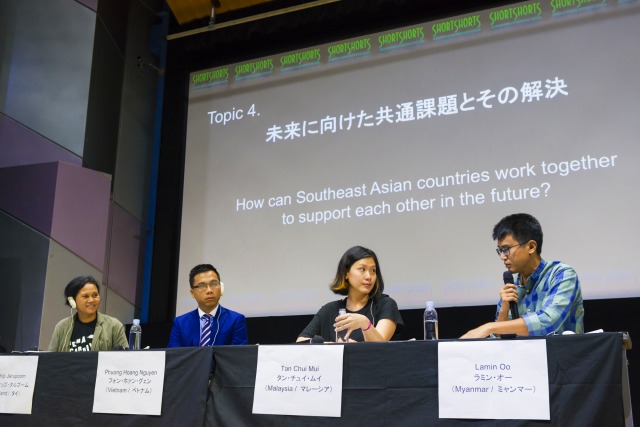
Ms. Salaithip Jarupoom (Thailand):
As I said before, the market size of Thai feature film is not growth compared to the amount of yearly undergraduate in film. The Thai student films, that is about 1,200 per each year, just only 5% that they can work into the film industry.
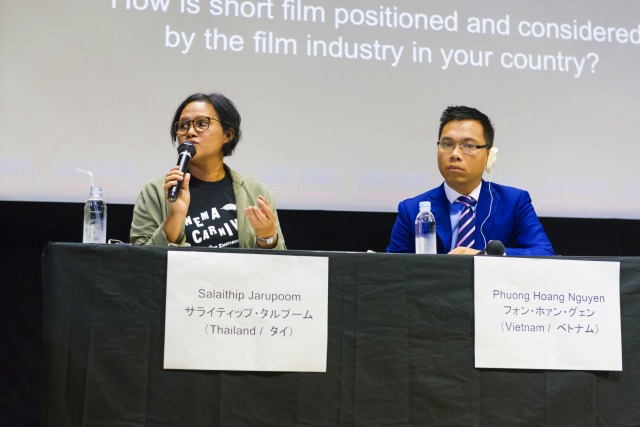 Just only 5 % because of the market size of the feature film is not growth. But there are also to be working as a freelance in media industry occasionally, some of them have their own production house and which serve both film and non-film production. So I think film exhibition and competition is a good occasion to show students’ talent like short circuit for accessing to film industry. It’s like Malaysia but in Malaysia, they want to do the advertisement production. Ok, but this is a good occasion to work with the film industry. So many film students will try hard to put to show their potential of making films, making short films. Moreover, some of them are affected that teach film, they develop their students’ ability by hire professional staff from industry, professional staff from Thai industry to be a guest lecturer so the students can have a chance to show that to them directly. And when they finish from the graduate, they can have a work. So it is quite hard in Thailand for non-student film maker to access to the film industry. Because many positions are reserved for film students.
Just only 5 % because of the market size of the feature film is not growth. But there are also to be working as a freelance in media industry occasionally, some of them have their own production house and which serve both film and non-film production. So I think film exhibition and competition is a good occasion to show students’ talent like short circuit for accessing to film industry. It’s like Malaysia but in Malaysia, they want to do the advertisement production. Ok, but this is a good occasion to work with the film industry. So many film students will try hard to put to show their potential of making films, making short films. Moreover, some of them are affected that teach film, they develop their students’ ability by hire professional staff from industry, professional staff from Thai industry to be a guest lecturer so the students can have a chance to show that to them directly. And when they finish from the graduate, they can have a work. So it is quite hard in Thailand for non-student film maker to access to the film industry. Because many positions are reserved for film students.
Mr. Phuong Hoang Nguyen (Vietnam):
Actually in Vietnam, it is a bit different with the Thailand, and non-professional film makers can generally access the film industry easier, short film making in Vietnam is quite different from the past, from the past decade. We have now a few competition, we have a short film festival, we have long course, short course, there’s many ways for the students to study film, making, they can apply to the university but admissions is limited, or they can go to my centre, or study, or they can study abroad. In my centre, after they graduate the course, we still support for them, money, equivalent to for them to make, work, even the short film. So every year, we have two competition in short film and documentary films and we have one award, it’s named good advertisement award.
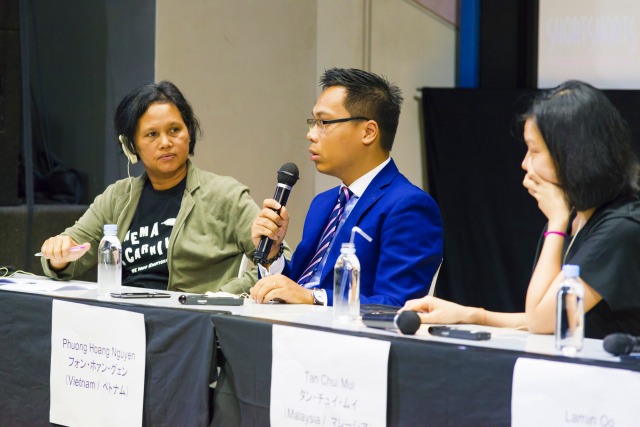 Every year, we produce more than 100 have film, shooting short films and documentary films. And now this year, we opened the new course scheme in Ho Chi Minh City. Now we are planning to grow community in Ho Chi Minh City, and in the near future, maybe Da Nang, in the middle of Da Nang. So we have three community, Hanoi, Ho Chi Minh and Da Nang.
Every year, we produce more than 100 have film, shooting short films and documentary films. And now this year, we opened the new course scheme in Ho Chi Minh City. Now we are planning to grow community in Ho Chi Minh City, and in the near future, maybe Da Nang, in the middle of Da Nang. So we have three community, Hanoi, Ho Chi Minh and Da Nang.
Ms. Tan Chui Mui (Malaysia):
Next New Wave is something I started last year. We did more after, two years ago, when I go back to Malaysia, trying to help young film makers to get new work and all that, and seeing their short films, I got a bit worried. One is, maybe they make less short films than what we used to do and second is they are being very careful, or they also make film like for competition or film festival. Also maybe something maybe even more strange is they have less exposure of Southeast Asia cinema compared to 10 years ago which is very strange.
 Because 10 years ago, we do realize or we do see other Southeast Asian filmmakers more because of the European film festival we travel to or we know what our neighboring countries are doing 10 years ago. But of the young film makers now, they sort of, because of the internet, they sort of go back more to American TV show or bigger main stream movie style of film making. So for the Next New Wave, one thing is because we are looking for great new young talent and another thing is I do think they need to expose themselves more to other possibilities in the region. So we actually achieve series of workshop, like one week workshops or something. We had four workshops before and we always have mentor from Southeast Asian country, sometimes five mentors, nine mentors. It varies from the functions of the workshop, and another thing of the workshop we do is we want to decentralize the whole focus from directing. So for the workshop is not only teaching about directing, you can come in as a producer, you have to choose, you have to decide whether you come in as a producer, director, or production designer or assistant director, or editor, or sound designer. So it’s very much, this actually what is lacking in young people, because they all want to be a director, which is a huge problem now. And so it is more still, it’s more like tackling the problem directly, but not maybe like film schools, it’s more like they must make short films during the workshop, and they get to learn directly from mentor from the region. So like if you are an editor, you learn from, it’s always Lee Chatametikool from Thailand who is a mentor, if, like, we have Bianca Balbuena from Philippine to be the producer mentor, we have usually like the top in that region to teach those student themselves. Sometimes you do feel bad, because maybe students don’t even know all these real talent in the region. Like they are actually, some are the best in the whole Asian region. But it does help them to learn at least other names in Southeast Asia, and also it does help them to explore, like maybe you are not only director, maybe you can be a very good sound designer, or you can try to be production designer which is actually very important in developing the film making skill, which is still lacking in Malaysia, everything is about directing. But apart from these initiatives, there are also a lot of others they’re trying to help the young talent, so like as for show, yeah, also giving brands and they are the one who is also trying to explore these Southeast Asian region of collaboration and all that. So there are more mentoring program like this.
Because 10 years ago, we do realize or we do see other Southeast Asian filmmakers more because of the European film festival we travel to or we know what our neighboring countries are doing 10 years ago. But of the young film makers now, they sort of, because of the internet, they sort of go back more to American TV show or bigger main stream movie style of film making. So for the Next New Wave, one thing is because we are looking for great new young talent and another thing is I do think they need to expose themselves more to other possibilities in the region. So we actually achieve series of workshop, like one week workshops or something. We had four workshops before and we always have mentor from Southeast Asian country, sometimes five mentors, nine mentors. It varies from the functions of the workshop, and another thing of the workshop we do is we want to decentralize the whole focus from directing. So for the workshop is not only teaching about directing, you can come in as a producer, you have to choose, you have to decide whether you come in as a producer, director, or production designer or assistant director, or editor, or sound designer. So it’s very much, this actually what is lacking in young people, because they all want to be a director, which is a huge problem now. And so it is more still, it’s more like tackling the problem directly, but not maybe like film schools, it’s more like they must make short films during the workshop, and they get to learn directly from mentor from the region. So like if you are an editor, you learn from, it’s always Lee Chatametikool from Thailand who is a mentor, if, like, we have Bianca Balbuena from Philippine to be the producer mentor, we have usually like the top in that region to teach those student themselves. Sometimes you do feel bad, because maybe students don’t even know all these real talent in the region. Like they are actually, some are the best in the whole Asian region. But it does help them to learn at least other names in Southeast Asia, and also it does help them to explore, like maybe you are not only director, maybe you can be a very good sound designer, or you can try to be production designer which is actually very important in developing the film making skill, which is still lacking in Malaysia, everything is about directing. But apart from these initiatives, there are also a lot of others they’re trying to help the young talent, so like as for show, yeah, also giving brands and they are the one who is also trying to explore these Southeast Asian region of collaboration and all that. So there are more mentoring program like this.
Also with the government, they want to actually explore to create a film industry. So two or three years ago, they actually invited the University of Southern California to open a film school in Malaysia, in collaboration with the local university, MMU, so it is called MMU USC. This year, we will see the first batch of graduates from this film school. So I would say, Malaysia is spending a lot of money on film industry now. I say this, this is a bit bad timing. 10 years ago, I think there were a lot more things happening but now, they really have to spend a lot of money to push the film industry where it’s not as productive as before, but we will see. Because it only started this few years, so we might see the results in the few years time.
Mr. Lamin Oo (Myanmar):
First of all, it’s a little bit awkward to be sitting here and talk about up and coming filmmakers when I became a film maker in 2013, so three years of experience, very, I’m still very new. So I can tell you how I became a filmmaker and I can explain to you two more ways that filmmakers are getting into the business. So I came back to Myanmar, I was studying in the US. I majored philosophy and psychology so obviously I didn’t know what to do with my life. When I came back, I joined a production team with my child friends, so I did very important job of production as carrying tripods, making tea for everybody in the production. So that’s the way I started, like learning film making the old fashioned way, or being on the production. But currently, in Myanmar, and especially how young people are getting into film making is through film making workshops, either script writing workshop or documentary film making workshop or short film workshops.
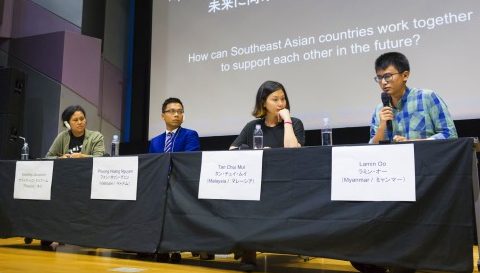 These are usually done in cooperation with international and local NGOs. I believe that is currently the main way that we are producing next generation of filmmakers. And another reason that we are doing, of course is, because we don’t have universities that teach film like other countries, but we always had young talented people going abroad to study, going to work in Japan, going to Japan like myself, or UK or so, wherever. But in the past, film making has never been an option for them, no one is going to the UK to study film making. They are either doing engineering or something that has to do with cooking science or science. But because of the recent development since 2011, because the country is opening, there’s an option for students to go abroad and study film making and come back to get a job here, in Myanmar. So I personally know three or four students, who was studying, who have studied film making in America, in American universities. So that’s the reason at the moment. So again, the three ways is doing the old fashioned way, being on production, through workshops and now going abroad to study.
These are usually done in cooperation with international and local NGOs. I believe that is currently the main way that we are producing next generation of filmmakers. And another reason that we are doing, of course is, because we don’t have universities that teach film like other countries, but we always had young talented people going abroad to study, going to work in Japan, going to Japan like myself, or UK or so, wherever. But in the past, film making has never been an option for them, no one is going to the UK to study film making. They are either doing engineering or something that has to do with cooking science or science. But because of the recent development since 2011, because the country is opening, there’s an option for students to go abroad and study film making and come back to get a job here, in Myanmar. So I personally know three or four students, who was studying, who have studied film making in America, in American universities. So that’s the reason at the moment. So again, the three ways is doing the old fashioned way, being on production, through workshops and now going abroad to study.
Southeast Asia Symposium: On the Current Status and the Future of Southeast Asian Shorts part4
In Japan, Southeast Asia, and neighboring countries, filmmaking has become more accessible thanks to the advancements of filmmaking technology, including improved digital cameras and editing software. As a result, more and more films are being produced yearly. With four panelists from the Southeast Asian industry in attendance, we discussed how short films occupy the Southeast Asian cinema landscape. We took a look at common film production styles, and learned about the kinds of support systems in place for up-and-coming filmmakers.
Symposium Panelists:
Lamin Oo / Documentary Filmmaker, Producuer(Myanmar)
Phuong Hoang Nguyen / General Manager of the Center for Assistance and Development of Movie Talents(Vietnam)
Tan Chui Mui / Filmmaker, Co-founder of Da Huang Pictures, Founder of Next New Wave(Malaysia)
Salaithip Jarupoom / Film Lecturer at Chulalongkorn University(Thailand)
Part4
Part1 is here With questions (1) to (4) in mind—there are likely to be similar issues or conditions shared by Southeast Asian countries. How can Southeast Asian countries work together to support each other in the future?
Part1 : How are short films positioned and considered by the film industry in your country?
Part2 : What is the current situation of short film production in your country? & The example of co-production between Malaysia and Japan
Part3 : How are up-and-coming filmmakers being nurtured in your country? Are they studying at film universities and cinema schools?
Mr. Lamin Oo (Myanmar):

Because Salaithip has mentioned earlier, we were talking in the hotel lobby about collaboration. She was mentioning that she wants me to come over to Thailand to do documentary film workshop. I told her the same thing. I want to bring her to Myanmar to do script writing workshop. So as far as Myanmar is concerned, we are still in a learning process. Every one of us, none of us consider ourselves professionals, or consider our product as international class but we want to learn, right? So I think one of the ways we can do is cross cultural, cross country learning. We are especially weak in those areas. That is just the nature of it. We need better script writers, we can come in one hand, holding script writers from Myanmar who have worked internationally, Dr. Ho Bin, who has been in this symposium last year, is one of them and that’s one.
So we need better script writers. We face the same challenge young filmmakers coming in wanting to be directors. In order to tell their stories, we need good set designers. We need costume designers which is something that is not very popular among the new comers. So I think the first step for us to collaborate, coming to each other’s country and sharing our knowledge is one thing. And another is like I said, because we are in the learning process, we want to see more films. If you want to make films, you have to watch films. I wanna see films from Thailand, Malaysia, Singapore, everywhere. Not just to share it with Myanmar general public, but also sharing with Myanmar filmmakers so that we can see what other techniques they’re using, what types of production, moppets aren’t easy. How are they producing these films? That is another way. Just seeing film from another country opens our eyes both culturally and as a filmmaker, technically as well. So those are the two things that I propose and I invite all three of you to come to Myanmar, we can figure out after.
Ms. Tan Chui Mui (Malaysia):
I guess for Southeast Asia, we actually started to be aware of neighboring countries. One of the earliest one was the Singapore International Film Festival when it was still Philip Cheah who was running it. One of his thing is always like “learn from your neighbor.” So he was one of the important film festival that showed a lot of Southeast Asian film, a lot of us actually started from there. And also, until now, the new festival director, Wahyuni Hadi, she’s also very Southeast Asian focus, and there is Singapore, but, of course, they want to be the centre of Southeast Asia.
 And in Indonesia, I know that start from this year, there is a group of producers, John Badalu, Meiske Taurisia they are supposed to be starting their film program called “Know your neighbor” which they have a lot of filmmaker pick Southeast Asian film and show the film, introduce the film, and have a dialogue, maybe meet through Skype with the director and audience. I think the one I saw was like Mouly Surya, picking a Thai director, Anocha Mai, and then after the film screening, they will have a Skype talk with the amateur in the cinema.
And in Indonesia, I know that start from this year, there is a group of producers, John Badalu, Meiske Taurisia they are supposed to be starting their film program called “Know your neighbor” which they have a lot of filmmaker pick Southeast Asian film and show the film, introduce the film, and have a dialogue, maybe meet through Skype with the director and audience. I think the one I saw was like Mouly Surya, picking a Thai director, Anocha Mai, and then after the film screening, they will have a Skype talk with the amateur in the cinema.
So this is very interesting initiative also. With the Next New Wave, we are just focused on workshops, so we have a lot of other neighboring countries’ mentor coming to talk to our young filmmaker. I am not sure in the future but other than that, I am not sure a lot of the international film festival in the region, they are more focused more on Southeast Asia more, festival in Georgia, festival in Cambodia or probably in Myanmar, too. Because I guess from the beginning where they show more international film, slowly, they actually show more neighboring countries film which is more of the Southeast Asian collaboration. I would say with film making, we do learn a lot more, because neighboring countries have very similar problem or when we talk about production, it’s quite similar. But it’s always I use this term, I really like this Thai terms, same same but different, so it’s also interesting to see like different stages and different political, social, and history background from every country. Like what you see that is happening in Myanmar, in Cambodia and Laos now, it’s very interesting. It’s sometimes, like when we see what’s happening in Cambodia, oh, we’ll say that’s like us in 10 years ago where we also like what you described, it’s a bit like when we started. Because when we, more than 10 years ago, in year 2000, all these young filmmakers start to make film together, we were all like from some of them were lawyer, none of them started films, some were lawyers, some were graphic designer, electrical engineer, myself, I was a bit closer to the film, computer animation, so then we take turns to help each other and direct film and doing all type of position in the production. So you will see like similar things happening and now we can see it happening in Cambodia. Some things you realize, something you see familiar, and you see something very different in every country.
Ms. Salaithip Jarupoom (Thailand):
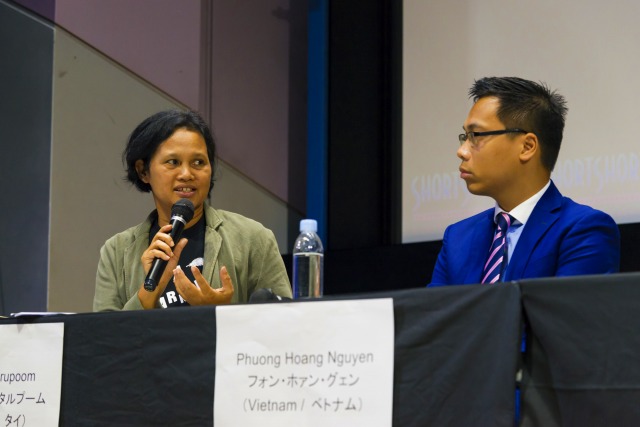
I would like to thank Short Short Film Festival & Asia and Japan Foundation to organize this symposium for me. It is very good chance to know all of you and I think we will have collaboration in developing our short films and because I’m from the university that teach film, so I think it is the best way for me to organize the workshop in the near future. I have a chance to invite all of you. Thank you, thank you.
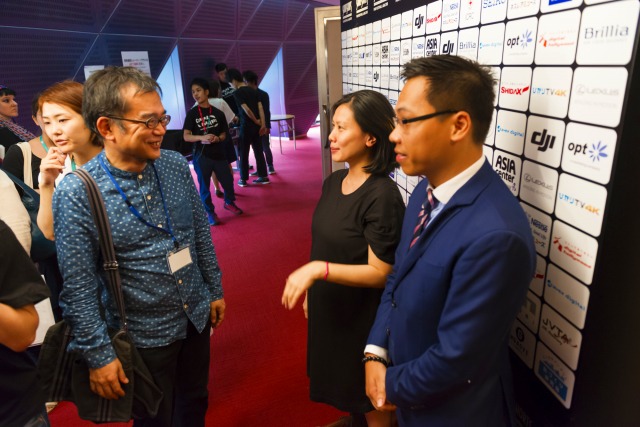
June 19th: Symposium on the current status and future of Southeast Asian short films – REPORT
After watching “Southeast Asia Program”, four leading filmmakers from Southeast Asian countries gathered for “Symposium on the current status and future of Southeast Asian short films.”
Ms. Salaithip Jarupoom from Thailand, Mr. Phuong Hoang Nguyen from Vietnam, Ms. Tan Chui Mui from Malaysia and Mr. Lamin Oo from Myanmar shared different situations that surround short films in their countries. (Click here to find more about the symposium speakers.)

The four Southeast Asian countries have different political, religious and economical conditions. In Malaysia, for example, short films are often made along with advertisement purposes. Meanwhile, in Myanmar, short documentaries are easier to be made because of the cheaper budgets.
During the symposium, a short film of Japan-Malaysian coproduction, “OKINAWA,” was screened. Rie Takatsuka from ODD PICTURES came out to talk about behind-the-scenes stories during shooting and other production processes of the film. She shared her vision for the future and said that she wants to blend various ways of seeing things through international coproduction.
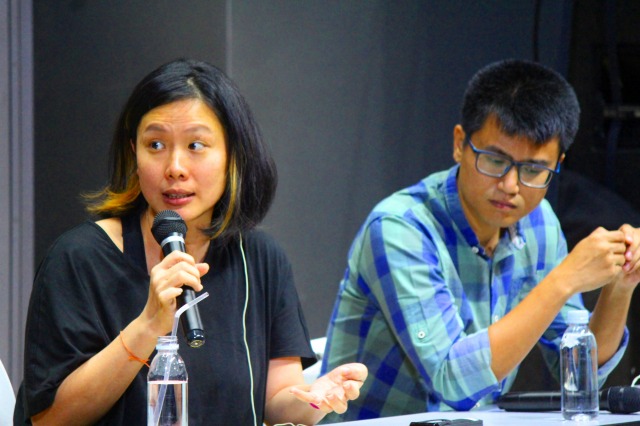
Ms. Tan Chui Mui from Malaysia (Left) and Mr. Lamin Oo form Myanmar.
It was an important opportunity for the audience to understand how things are working around short film productions in Southeast Asia. Our four guests came up with an idea of starting a new workshop together; a new bond has been developed in Tokyo!
